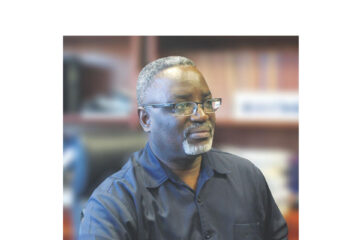Namibia’s unemployment crisis is not just a statistic. It is the quiet desperation in villages and towns, the hollowed-out dreams of graduates, and the simmering frustration of a generation with no place to go. We have heard the speeches and seen the plans. What we need now is not another promise, but a national reckoning on jobs.
When President Nandi-Ndaitwah declared in her inaugural speech that “in Namibia, we are too few to be poor,” it wasn’t just a hopeful slogan. It was a challenge. A reminder that our small population should be an advantage, yet unemployment and underemployment continue to choke opportunity in this country.
For too long, the unemployment debate has been a merry-go-round of blame. Colonialism. Apartheid. Neo-colonialism. All real, all damaging, but all history. The question is: what are we doing now?
We’ve been independent for 35 years. Namibia is ranked a lower middle-income country, with a per capita GDP above the sub-Saharan average. But that number flatters to deceive. Only one-quarter of Namibians, and just one-sixth of black Namibians, have an adequate income. Two-thirds live in poverty. The truth is brutal: we have hit a brick wall.
Unemployment is not just a data point. It is the face of the graduate who’s been job-hunting for three years. It is the small-town youth who survives on handouts and hustles. It is the rural family scraping by on subsistence farming while fertile land lies idle. It is worst in the Kunene and Zambezi regions, but no part of Namibia is immune.
We can blame leadership failures, corruption, and the waste of public resources, and those criticisms are fair. But there’s a deeper wound: our economy and our education system are not speaking to each other.
Our education system was built for yesterday’s economy. It produces workers for jobs that no longer exist, while the jobs of today go unfilled. Yes, we have achieved 98.6% access to education. But quality? That’s another story. Dropout rates are high. Many learners repeat grades and eventually give up. Tertiary graduates are often trained for white-collar roles in a formal job market that has barely grown in three decades, even as our population exploded from 1.3 million to over 3 million.
Our graduates can work anywhere in the world except here. Why? Because our economy has no space for their skills.
The formal economy hasn’t expanded in 35 years. Manufacturing has been allowed to die. Agriculture, which could create thousands of seasonal jobs, is unattractive to youth who are waiting for the jobs they trained for. Our mineral wealth, the backbone of our economy, is largely in foreign hands. We extract but don’t beneficiate. We sell raw materials and buy back finished goods. We’ve embraced cheap imports that hollowed out local industry.
Yes, there’s excitement about tourism, oil, and green hydrogen. But unless we design deliberate job-creation strategies, these could end up like other resource booms: big on revenue, small on employment.
Some will groan at the idea: “Another summit? Another talk shop?” But what we are talking about is not the kind of conference that generates a glossy report and gathers dust. This must be a hard-nosed, outcomes-driven national Jobs Summit. A gathering where government, business, labour, academia, and the informal sector lock themselves in a room until there’s a real plan.
It must identify the structural barriers to job creation, from skills mismatches to investment roadblocks. It must map out the sectors with the fastest potential for job growth, agriculture, manufacturing, tourism, renewable energy, ICT, and match skills to opportunities. And it must set measurable targets for the number of jobs, training programmes, and small businesses supported, with strict timelines for delivery.
We don’t have to reinvent the wheel. South Africa’s 2018 Presidential Jobs Summit brought unions, business, and government together to agree on local procurement, youth employment schemes, and small-business financing. Imperfect, but impactful in targeted areas. Rwanda used national employment forums to match its Vision 2050 targets with a massive ICT skills drive, turning Kigali into a tech hub in under a decade. Singapore in the 1960s faced unemployment above 10% and used tripartite councils to retrain workers, attract manufacturing, then transition to finance and services. Today, it has near full employment.
Namibia can adapt these models to our own context , but only if there’s political will. For this summit to matter, it must end with binding agreements. The education sector must commit to overhauling vocational training within two years. The mining sector must pledge beneficiation quotas. Agriculture must launch youth agribusiness incubators, backed by bank and government financing.
This isn’t charity, it’s survival.
If we don’t act, we will entrench a two-speed Namibia: a small elite living well, and a restless majority trapped in poverty. That is a breeding ground for instability.
Madam President, you said we are too few to be poor. We agree. But without urgent, coordinated action, poverty will remain our default setting. A Jobs Summit won’t solve everything. But it can be the spark that forces government, business, and society to face the truth: Namibia’s unemployment crisis is not just an economic issue. It is a national emergency.
Call the summit. Force the hard conversations. Put commitments in writing. Give this generation, and the next, a fighting chance.


